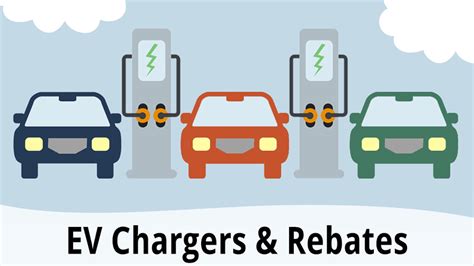Charge Up Your Savings: Unlocking Electric Vehicle Charger Rebates
As electric vehicles (EVs) gain traction globally, many consumers are eager to embrace this eco-friendly transportation option. However, the initial investment in electric vehicles and their charging infrastructure can be daunting. Luckily, various rebates and incentives are available for those looking to install home EV chargers. This article explores how to access these potential savings through rebate programs, ultimately encouraging the transition to electric mobility.
Understanding Electric Vehicle Charger Rebates
Electric vehicle charger rebates are financial incentives offered by government entities, utility companies, and other organizations aimed at reducing the cost of installing home charging stations. These rebates can cover a significant percentage of the installation costs, making it more financially feasible for homeowners to invest in an EV charger.
Types of Rebates Available
Rebates for EV chargers can vary significantly depending on your location and the specific programs offered. Here’s a breakdown of the common types of rebates you may encounter:
- Federal Incentives: The federal government provides various tax credits for purchasing electric vehicles, some of which extend to the installation of EV chargers.
- State Programs: Many states offer their own rebate programs that can cover a considerable part of the installation cost.
- Utility Rebates: Local utility companies often have initiatives designed to promote electric vehicle use and may offer additional rebates for home charger installations.
- Local Government Incentives: Some cities or counties provide grants or rebates as part of their sustainability programs.
How to Access EV Charger Rebates
Accessing rebates for EV chargers typically involves several key steps:
- Research Available Programs: Start by researching the programs available in your area. Websites like the U.S. Department of Energy or local state energy offices often list available rebates.
- Check Eligibility: Each rebate program has specific eligibility requirements. Ensure you meet these before proceeding with your installation.
- Select a Qualified Charger: Many rebate programs require you to purchase a charger that meets certain specifications. Make sure to choose a model on the approved list.
- Gather Necessary Documentation: Be prepared to provide proof of purchase, installation, and other documentation when applying for rebates.
- Submit Your Application: Follow the instructions provided for submitting your rebate application, ensuring all required documents are included.
Benefits of Installing an EV Charger at Home
Installing a home EV charger can offer numerous advantages beyond just financial savings:
- Convenience: Charging your vehicle at home eliminates the need to visit public charging stations, saving time and effort.
- Increased Home Value: A home charging station can enhance the attractiveness of your property to potential buyers, given the increasing demand for EVs.
- Cost Savings on Fuel: Electricity is generally cheaper than gasoline, enabling significant savings over time.
- Environmental Impact: Reducing dependence on fossil fuels contributes to lower carbon emissions, making charging at home a more sustainable choice.
Challenges and Considerations
While the benefits of installing an EV charger are clear, potential challenges should also be considered:
- Installation Costs: Even with rebates, initial installation costs may still be significant, particularly if electrical upgrades are required.
- Home Electrical Capacity: Your home may need an electrical upgrade to accommodate an EV charger, adding to the overall cost.
- Finding a Qualified Installer: Not all electricians are familiar with EV charger installations, so finding a qualified contractor is crucial.
Conclusion
With the increasing popularity of electric vehicles, the availability of rebates for home EV chargers provides an excellent opportunity for cost savings and easy transition to sustainable transportation. By exploring available programs, understanding the benefits, and preparing for potential challenges, homeowners can take significant steps towards reducing their carbon footprint while enjoying the financial perks that come with electric mobility.
FAQs
1. How much can I save with EV charger rebates?
The savings can vary widely based on your location and eligibility for different programs, but rebates can often cover up to 50% of the installation cost.
2. Are there tax credits available for EV charger installation?
Yes, federal and state tax credits may be available for installing EV chargers, which can further lower your overall costs.
3. Can I apply for multiple rebates for my EV charger?
In many cases, applicants can access multiple rebates as long as they meet the eligibility criteria for each program. Be sure to read the guidelines carefully.
4. What types of EV chargers are eligible for rebates?
Eligibility for rebates often includes Level 2 chargers, but specific programs may have additional requirements, so check with local guidelines for details.
5. How long does it take to receive a rebate after application?
Processing times may vary by program, but applicants can generally expect to receive their rebates within a few weeks to a few months after submission.
Download Electric Vehicle Charger Rebate
